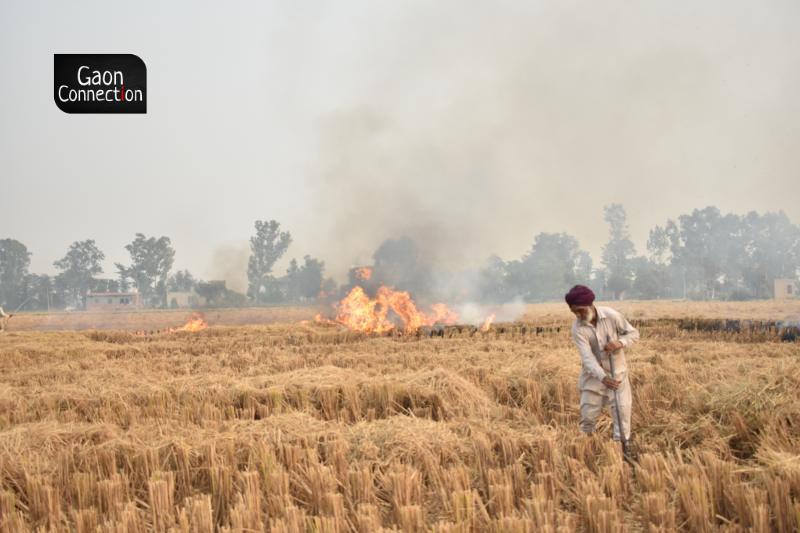Calling the air pollution situation in the national capital an ‘emergency situation’ that requires immediate attention, the Supreme Court heard a plea in the Capital on November 15.
The Central government suggested a slew of measures to curb the rising levels of pollution in the national capital including the introduction of the odd-even scheme restricting vehicular movement, a ban on entry of trucks from the neighboring states, and a lockdown.
During the hearing, Tushar Mehta, the Solicitor General of India, submitted that stubble burning was not the major cause of air pollution and only contributed 10 per cent to it. He also reportedly added that road dust naturally contributed to the pollution. Dust control measures would be taken at construction sites. A suggestion was also made to stop the use of diesel generators, except in hospitals and people with respiratory problems were urged to stay indoors, Mehta was quoted as saying. People who were found to be burning garbage would be fined, he added.
In an affidavit submitted by the Central government to the Supreme Court during the hearing, it highlighted that PM2.5 and PM10 (particulate matter) levels from agricultural burning were 4 per cent during winters and 7 per cent during summers.
Also Read : Subsidy worth crores, monetary fines and seeder technology too; but no end to stubble burning in Punjab
Peak contribution of smoke from farm fires to Delhi’s PM levels was recorded on November 7 when it hit 48 per cent, which is the second-highest daily contribution percentage recorded since such estimation was started by the System of Air Quality and Weather Forecasting and Research (SAFAR), developed by Indian Institute of Tropical Meteorology, Pune, in 2018. However, as of November 15, smoke from farm fires contributed to 12 per cent to Delhi’s pollution, reported SAFAR.
The Supreme Court had earlier directed the Central government to take steps to curb the rising levels of pollution in the state and also directed the Delhi government to file an affidavit in this regard.
A three judges bench comprising of Chief Justice of India NV Ramana, Justices DY Chandrachud, and Surya Kant heard the plea.
More details from the proceeding
During the plea, the Delhi government submitted an affidavit to the Supreme Court stating that it was ready to declare a ‘complete lockdown’ to control air pollution in the National Capital Region (NCR). It also reportedly emphasised that such a decision would be more effective and meaningful if it was implemented across the NCR and neighbouring states.
In its affidavit, the Delhi government was also quoted as saying that provided the compact size of the national capital, a lockdown will have a limited impact on the air quality.
Also Read : Delhi’s worst Diwali night in the past 5 years, first smog episode to last for seven days: CSE
The Delhi government in its affidavit had also stated that while stubble burning was insignificant in Delhi, efforts were taken consistently to address it in the national capital. However, the judges noted that the Delhi government has been solely focusing on stubble-burning as the cause of pollution in its affidavit.
In an emergency meeting held on November 13, the Delhi government had announced that schools will remain shut in Delhi-NCR due to the high levels of pollution, and offices would remain closed too and employees would have to work from home.
The matter will be taken up again on November 17.
Worsening Air quality in Delhi
Delhi’s air quality has been severely affected ever since Diwali. According to a report by the Centre for Science and Environment (CSE), Delhi witnessed its worst Diwali in the last five years when PM 2.5 concentration on Diwali night was the most intense. The pollution levels recorded on Diwali night were also 4.5 times the average night-time levels recorded in the week preceding Diwali. The AQI on Diwali was 382 and it was 414 in 2020, as per data provided by Central Pollution Control Board (CPCB).
Also Read : Ahead of Diwali, Delhi’s air quality dips to ‘very poor’ category; likely to remain so till Nov 6
The non-profit had also predicted that the national capital will be enveloped in a blanket of smog for at least seven days. The AQI (air quality index) in Delhi was recorded at 379 by CPCB on November 15. It was under the ‘severe’ category on November 14 when the AQI was recorded at 414.
As per CPCB, an AQI between 301-400 falls under ‘very poor’ category which affects respiratory illness on prolonged exposure while an AQI between ‘401-500’ falls under ‘severe’ category that affects healthy people and seriously impacts those with existing diseases.



















